How to Stop Beard Itch With These 12 Effective Home Remedies
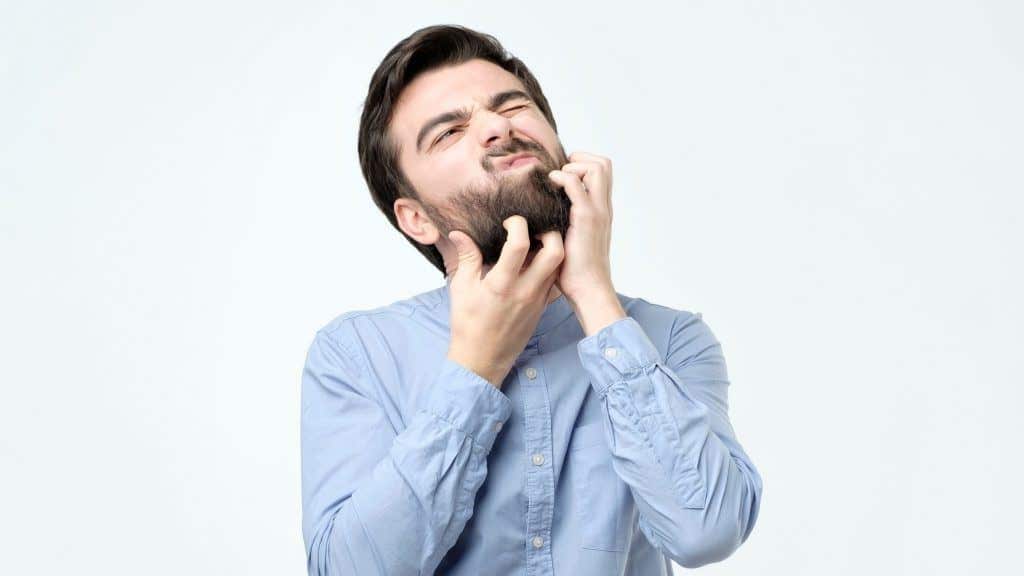
You’ve finally decided to grow a beard, and it’s a work in progress. You have an idea of how it’s going to look – magnificent, no doubt – and you’re ready to join the ranks of your bearded brethren.
There’s just one problem: beard itch.
Beard itch is that irritating sensation, that’s a strong dose of reality while growing a beard. Frankly, it’s enough to drive some men so crazy that they’d rather shave it off than endure another itching minute.
But hold on, fellas. Put the razor down, because there are solutions to the maddening itching. Don’t give up on your beard, but let it achieve its full glory.
Why does my beard itch?
Before we dive into home remedies for stopping your beard itch, let’s take a brief moment to look at some reasons why it itches.
If you’re still in the early stages of beard growing and you’re wondering why the hell it itches so damn much, it’s because the growth process isn’t over yet. The itch is very common for new beardsmen and can last for a couple of months or longer. And though you may be tempted to shave off your beard completely, please don’t give up just yet. We promise that once you get past this initial stage, there are much better times ahead.
Because you shave(d)
Your beard itches, in part, because of all those years you spent shaving your facial follicles. Shaving caused your beard hair to become sharp and coarse, which is the primary reason stubble often feels so rough.
Those oft-shorn whiskers irritate and inflame when they break through the skin and lead to itching – which may seem to last forever.
The hairs are also cut off at different levels as they emerge from your skin, which creates an uneven surface and makes them more likely to irritate you as they grow longer. If you can tough it out without shaving, your beard will ultimately feel better than if you just keep hacking away at it.
Because of dry skin
The skin beneath your beard becomes increasingly dry as your beard grows, because, in part, the skin’s natural oils become depleted by the sudden appearance of unshaven whiskers. The increased dryness leads to beard itch and its other partner in crime: beard dandruff. It’s not a feel-good or look-good combination.
The most common cause of an itchy beard has to do with dry skin. That’s why every time you wash your face, you should scrub with a quality facial cleanser which deeply cleanses your pores. Your skin needs more exfoliation than your hair does, so make sure to focus on that when you’re washing your beard.
Because your beard collects all kinds of things
Your beard is a magnet for a lot of things: dust, food, dead skin, and a variety of outdoor pollutants you can’t avoid. All of them can lead to itching.
Now that we know the “why” of beard itch, let’s examine the ways to get rid of it. The good news is that all of them are things you can do from the comfort of your bathroom.
Your beard itches because your beard collects all kinds of things, like dirt and bacteria. If you don’t clean it regularly, then these irritants can wreak havoc on your skin.
The result? Beard dandruff, also known as beardruff. Beard dandruff is almost the same thing as regular dandruff, and the only difference is that it’s happening in your facial hair and not on your scalp.
It looks like white flakes of dead skin coming off your face. It isn’t a pretty sight, especially when someone sees it fall off your chin (how embarrassing).
How to stop beard itch (A simple, illustrated article)
Knowing how to stop beard itch when growing a beard will help stave off the madness that may lead you to shave your whiskers.
1.Wash it
You need to clean your beard regularly if you want to get rid of beard itch. For one, your face sheds dead skin cells every day, and they’ll congregate on your beard if you don’t wash them away. Then, there’s the dirt, grime, food, etc. that also cling to your whiskers if you don’t do something about them.
You’ll want to clean your beard deeply, however, to make sure you’re getting rid of all the detritus found on and within it. Use a quality beard shampoo or wash – don’t use your regular shampoo, as the detergents within it are too harsh – and scrub it deeply to the skin with your fingertips.
Rinse it with lukewarm water (the same temperature of the water you’ll want to shampoo it with), which helps to open your skin pores.
We can’t emphasize enough the importance of using a shampoo designed for your beard and not the stuff you use on your head. The harsh detergents and fragrances can strip away your skin’s natural oils, which easily can lead to a dry, itchy beard.
2. Dry your beard
Drying your beard is an often-overlooked step that warrants proper attention. Any water left behind on your beard and skin can lead to itching – especially hard water that contains calcium and magnesium. Hard water evaporates on the skin and draws moisture from it, which can leave an itchy beard rash.
We don’t recommend using a hair dryer to dry your beard, because a simple, soft towel suffices. Gently pat and rub it dry, until no trace of water remains on the skin beneath your whiskers.
If you do use a hair dryer, however, it should only be on a low to medium temperature.
3. Scrub it with an exfoliating scrub
Exfoliation means removing dead cells that gather on every human’s skin, including facial skin. Dead skin cells, as previously mentioned, lead to dry skin and itching. That’s why it’s important to use a face scrub that acts as an exfoliator to remove not only dead skin but dirt, grime, and other irritants that exist under your beard.
A good DIY recipe for creating an exfoliating scrub is to mix baking soda with water to form a paste. Rub the paste on your beard and scrub it gently while going easier on the skin as you would with a shampoo or face wash. You can add some sea salt to the mix to create an even stronger scrub.
4. Use beard oil
Beard oil is the magic elixir of beard care. No self-respecting beardsman would dare to not have a bottle of his favorite beard oil in his grooming kit.
What’s the big deal about beard oil? Let’s look:
- Beard oil softens the beard while moisturizing the skin underneath. Proper hydration keeps your beard soft and manageable.
- Beard oil reduces itchiness thanks to its moisturizing qualities.
- Beard oil helps to get rid of beardruff.
- Beard oil makes your beard more manageable. Unless you prefer a messy beard, then you’ll need to groom and shape it, and beard oil makes your job a helluva lot easier. No, it doesn’t provide the firm hold of beard balm or beard wax, but it helps you to get rid of bed beard, among other issues.
- Beard oil helps prevent ingrown hairs – another cause of irritation and itchiness.
- Beard oil often comes in pleasing, masculine scents.
The good news is that there’s a boatload of beard oils from which to choose, but it always pays to do your research. It’s important to know your skin and hair type, for one, because some oils work better for certain types than others. Argan oil is excellent for use on a dry beard and skin. If you have sensitive skin, look for a product that contains jojoba or grapeseed oil.
Look for oils with all-natural ingredients. They’ll provide everything you need to maintain a healthy, thicker beard without irritating your skin or beard. Oils that contain additives such as alcohol often sap needed moisture from your skin and beard.
Beard oils contain carrier oils and essential oils. Carrier oils – which dilute potent essential oils – can be applied directly to the skin and make up the bulk of beard oil recipes. Some common carrier oils include argan, jojoba, sweet almond, and coconut.
Essential oils are more concentrated than carrier oils and usually are too strong to be applied directly to the skin. Some common essential oils found in beard oil are lavender, eucalyptus, peppermint, and tea tree.
A quick word about applying beard oil: the amount you use is proportionate to the length of your beard, i.e., the longer your beard, the more drops of beard oil you should use. For new beards, three to five drops usually are enough. A full-grown beard, such as one from three to 12 months, may need 10 drops or more.
5. Condition it
While beard oil represents one way to condition and moisturize your beard, you also can use a conditioner made for your beard. A conditioner not only helps your beard maintain its optimal hydration but also softens it to make it more manageable.
A quality beard conditioner helps to reduce split ends and repairs other damage to your facial follicles and, of course, eases the irritation that leads to itching. While it’s technically OK to use a conditioner you also use on your scalp hair, we strongly recommend using one designed for your beard.
While every beard benefits from some conditioner, the practice is particularly effective on long beards, because longer whiskers need more of the skin’s natural oils to keep them well-coated and hydrated. Many quality conditioners come with anti-tangling agents that keep your beard free of knots that make it hard (and a bit painful) to comb or brush.
Make sure that you coat every strand of your beard when you apply a conditioner, and let it stand for up to three minutes before you rinse it off to give it time to hydrate and moisturize your beard properly.
Most conditioners contain natural oils such as argan, jojoba, and sweet almond that are gentle on your facial skin and beard while keeping them well hydrated.
Keep in mind that in the early stages of beard growth hair strands curl back against the skin with the sharp edges created during all those years (or months) you shaved. A good conditioner will soften your beard and edges while reducing the irritation.
And, oh yeah, that added hydration and softening works wonders for getting rid of your beard itch.
6. Moisturize it
True, we’ve already talked some about the importance of keeping your beard well hydrated and how it helps relieve beard itch, but we don’t want to downplay the importance of moisturizers and their effectiveness. Apply a moisturizer after you shower and at the end of the day; like with shampoos and conditioners, it’s best to use a moisturizer meant for your facial skin.
Even if you use a conditioner regularly – and we think you should – or a hydrating shampoo (or both), you still may experience some itching. That’s why it’s a good idea to add a moisturizer to your routine and use it three to four times a week.
Some natural moisturizers you can try include olive oil, aloe vera creams and lotion, calendula oil, cucumber, and even chamomile tea.
7. Keep it trimmed
While you’re letting your beard grow, you also want to keep it trimmed after it has achieved the length you desire. Otherwise, you risk stray and ingrown hairs that can lead to the kind of itching that you thought had ceased after the early growth stages, when it almost always itches.
There are a variety of tools you can use to keep your beard trimmed, from beard scissors to manual razors or electric razors. Most beard experts suggest using an electric razor for trimming purposes, because it helps provide a uniform cut without the potential for stray and ingrown hair. Scissors are a good option, as well.
Manual razors, meanwhile, can lead to skin irritation and more itchiness. In general, trimming your beard consistently will help you stave off beard itch.
8. Brush your beard
There are many, many reasons for brushing your beard regularly, including that it can reduce itchiness and scratching.
- A top-quality beard brush, such as a boar’s hair beard brush, has bristles of different lengths to ensure that you’re capturing hair at every level with each brush stroke.
- Beard brushes promote hair growth while helping to prevent hair loss. That’s because a brush’s bristles gently massage the skin while increasing blood flow to the hair follicles, which can turn dormant hair follicles into productive ones.
- A brush helps spread your skin’s natural oils evenly throughout your beard to help reduce and eliminate dryness and itchiness. In short, a brush acts as an effective conditioning tool.
- A brush loosens knots, tangles, and curls in your beard while changing its texture to look fuller and straighter. Doing so helps reduce irritation and itchiness.
- A brush also helps keep your beard clean by removing any loose dirt and debris that remain after you’ve washed your beard. As we discussed earlier, dirt, grime, and other crud that gets in your beard can lead to itchiness.
- Beard brushes have many other benefits, as well, including that they make it easier to style the beard and help to give it a good shine because of how it spreads your skin’s natural oils (or beard oil that you’ve applied manually).
Another quick note: You can, and should, also use a beard comb as part of your grooming routine. A quality beard comb – not the cheap plastic kind – is gentle on your beard while making it easier to shape it into your preferred style. However, a beard brush is more effective for combating beard itch than a beard comb, at least in the long run.
Nonetheless, regular combing will remove weak hairs that may cause irritation, while it also stimulates hair follicles and blood flow to help create an overall healthier beard.
9. Balm it
Beard balm, like beard oil and beard conditioner, is another helpful tool for the fight against beard itch.
Balm is different than beard oil in many ways, including that it contains beeswax and cocoa butter, or another type of butter, which give it an excellent “hold” and, in turn, makes it easier to keep your beard in place and its desired shape.
But balm also serves to lock in moisture, some of which the balm provides, while keeping beard itch at bay. Balm also treats beardruff, which is another sign of dry, irritated facial skin that probably itches like hell.
Beard balms typically work best on longer, thicker beards, but men with shorter beards also may reap the many beard balm benefits.
As with beard oil and other beard grooming products, we recommend choosing a balm that contains all-natural ingredients, including jojoba, grapeseed, and argan. Natural butter such as cocoa and shea butter is excellent for your beard’s overall health, as well.
10. Medications
While doctor-prescribed medications don’t qualify as home remedies for fighting beard itch, they can provide instant relief when the itch becomes a real bitch.
Common medications include antifungal cream, corticosteroid cream, hydrocortisone, ketoconazole, glycolic acid, and ointments that contain lactic acid and urea. You also may try topical antifungal treatments, such as itraconazole.
11. Don’t scratch it!
Trying to avoid scratching your beard when it itches may be the most challenging step of all. After all, the damn thing itches, and keeping your fingers and fingernails away from the source of that itching is a major test of willpower.
Just remember: continued scratching of your facial skin and hair exacerbates the problem. It also can lead to an itchy beard rash. It’s the same as rubbing your eyes when you have allergies; chances are, it’s only going to make the problem worse.
12. Review and modify your lifestyle, if needed
Our lifestyle and the choices we make regarding food, drink, exercise, and bad habits such as smoking have far-reaching consequences for our overall health – including the skin and hair. Here are some tips for maintaining your beard (and keeping beard itch at arm’s length) while leading a healthy lifestyle.
- Drink plenty of water
Among other things, water helps to regulate the circulatory system which delivers nutrients to hair follicles. Plus, it keeps our bodies hydrated, and we know the importance of proper hydration for maintaining the health of a beard and reducing beard itch.
- Maintain a healthy diet
In some ways, your beard is a reflection of what you eat. A healthy diet, such as one that features plenty of fruits and vegetables, helps ensure that you’re getting the variety of nutrients and vitamins your entire body needs.
Many people choose a vegan diet, and there’s no doubt that it’s a diet that will keep you eating your share of fruits and vegetables. If you’re a meat-eater – and there’s nothing wrong with that – then try to choose grass-fed and organic meat, dairy, and poultry. Doing so means avoiding chemicals that some studies show may lead to hair loss, among other health issues.
Foods with saturated fats, which should consume about 5% of your total calories, will help maintain healthy testosterone levels that, in turn, help you maintain a healthy, thriving beard.
- Exercise – often
All of us understand the benefits of maintaining a regular exercise program. Among other things, exercise helps you to maintain good blood circulation, which is essential for healthy facial hair and skin. The Mayo Clinic recommends exercising for 30 minutes day, whether it’s walking, running, cycling, weight training, etc.
Moreover, a good exercise-induced sweat helps your body to get rid of toxins that are unhealthy for the body. It unclogs skin pores and hair follicles to create a better environment for healthy hair and whisker growth.
How long does beard itch last?
The good news is that beard itch, in the vast majority of cases, is temporary. It might seem like it lasts forever when it’s at its peak, but it’s usually over in one to three weeks, as your whiskers get longer and are replaced by new follicles that don’t have sharp, jagged edges caused by shaving.
That’s not to say that beard itch can’t return, because it will when your skin and facial hair become dry, but following the steps above will eliminate the issue before it becomes unbearable. And most beardsmen will tell you that the worst itching happens during the initial growth stages.
Conclusion
Let’s face it: beard itch sucks. But if you’re going to grow a beard, you have to endure it from time to time, especially at the beginning. Just don’t let it get you down or force you to take drastic measures, such as shaving off what you’ve worked so hard to grow.
There are plenty of solutions for resolving beard itch – solutions that help keep you on track to grow the kind of beard you’ve always wanted. We hope the “remedies” offered above help you fight the good fight while not allowing beard itch to knock you off course.
How about you? Have you experienced beard itch? What did you do to fight it? As always, we welcome your comments.
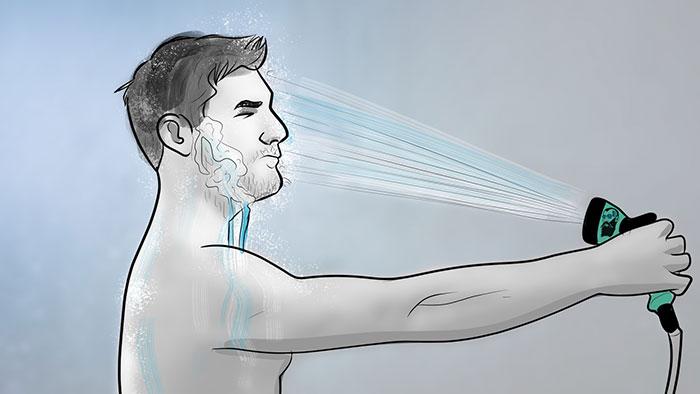


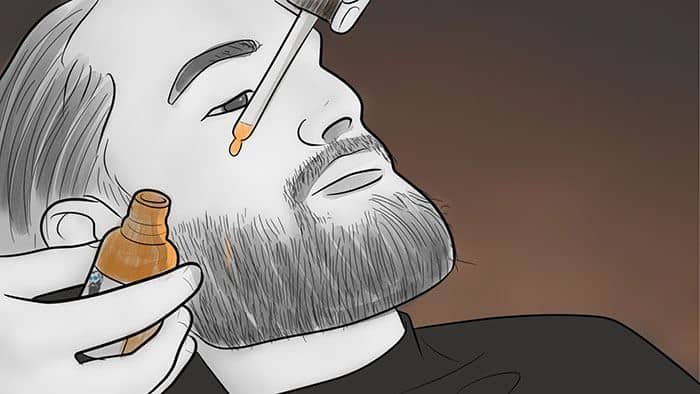

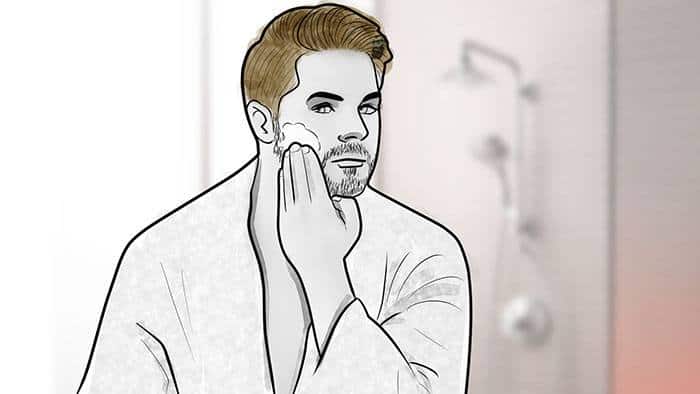
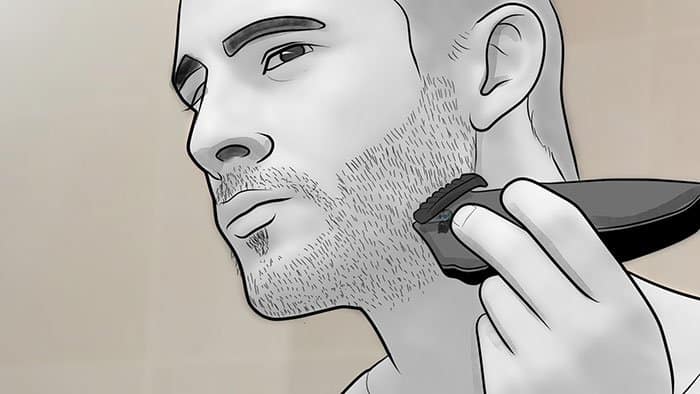

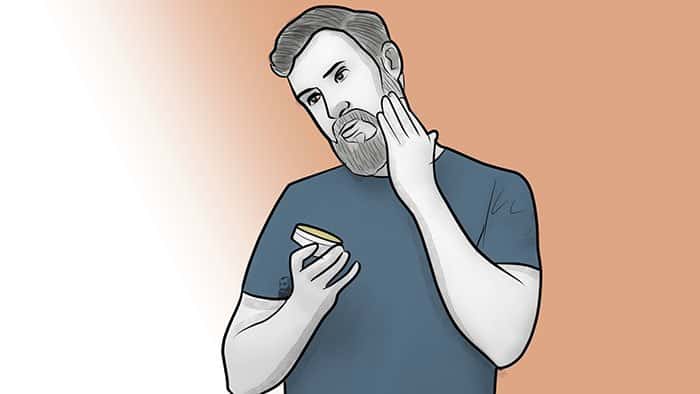
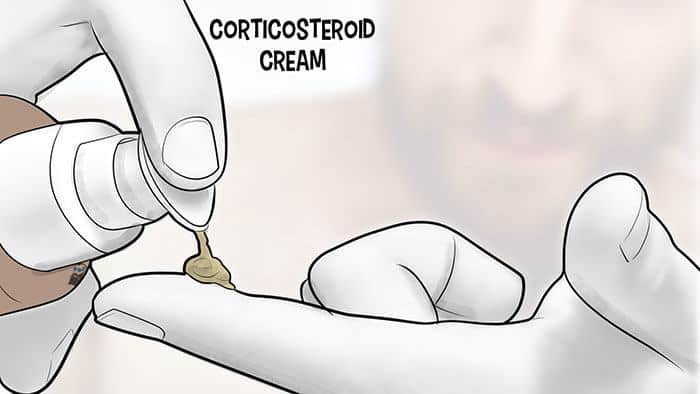

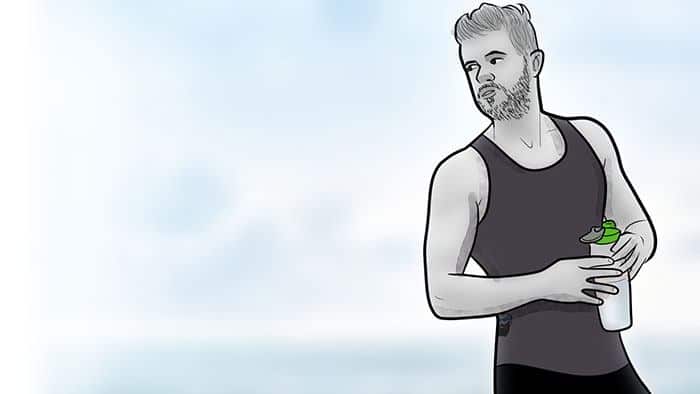
2 Comments
This is the best article I read so far regarding beard management.. Thanks Domen for sharing.
I am also looking for easy remedies to colour my beard.. Can you please help me.
I’m 60 years old and from the time I enlisted in the Army in 1977 until I was discharged in 1990 I would not shave on my days off and when I was on leave. Then in 1991 until 2001 I was in the National Guard, I would not shave between Drill. Since I left the military in 2001, I have had a beard with shaving the cheeks and neck. I have never experienced beard itch. I read about it in novels, mostly by female authors, but never understood what that was like. Maybe my personal hygiene was the reason as I daily showered using traditional bar soap without perfumes.